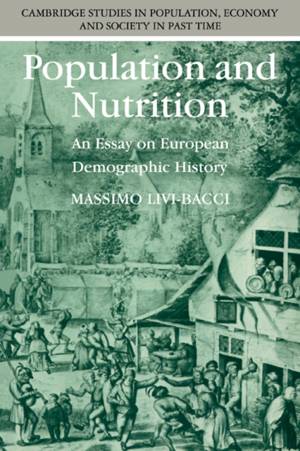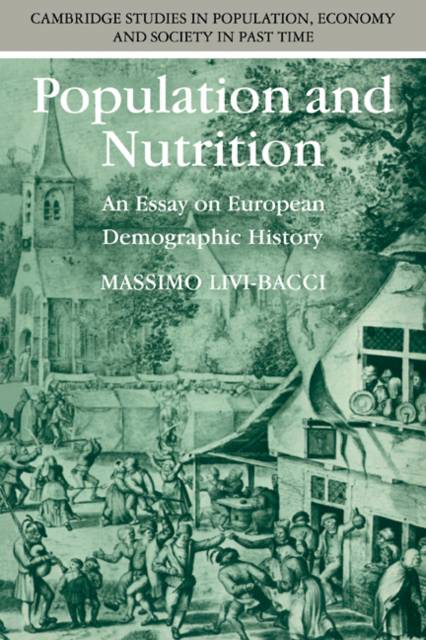
Door een staking bij bpost kan je online bestelling op dit moment iets langer onderweg zijn dan voorzien. Dringend iets nodig? Onze winkels ontvangen jou met open armen!
- Afhalen na 1 uur in een winkel met voorraad
- Gratis thuislevering in België vanaf € 30
- Ruim aanbod met 7 miljoen producten
Door een staking bij bpost kan je online bestelling op dit moment iets langer onderweg zijn dan voorzien. Dringend iets nodig? Onze winkels ontvangen jou met open armen!
- Afhalen na 1 uur in een winkel met voorraad
- Gratis thuislevering in België vanaf € 30
- Ruim aanbod met 7 miljoen producten
Zoeken
€ 60,95
+ 121 punten
Omschrijving
From the time of Malthus, the insufficient supply of food resources has been considered the main constraint of population growth and the main factor in the high mortality prevailing in pre-industrial times. In this essay, the mechanisms of biological, social and cultural nature linking subsistence, mortality and population and determining its short and long term cycles are discussed. The author's analysis examines the existing evidence from the century of the Great Plague to the industrial revolution, interpreting the scanty quantitative information concerning caloric budgets and food supply, prices and wages, changes in body height and epidemiological history, demographic behaviours of the rich and of the poor. The emerging picture sheds doubts on the existence of a long term interrelation between subsistence of nutritional levels and mortality, showing that the level of the latter was determined more by the epidemiological cycles than by the nutritional level of the population.
Specificaties
Betrokkenen
- Auteur(s):
- Uitgeverij:
Inhoud
- Aantal bladzijden:
- 168
- Taal:
- Engels
- Reeks:
- Reeksnummer:
- nr. 14
Eigenschappen
- Productcode (EAN):
- 9780521368711
- Verschijningsdatum:
- 22/02/1991
- Uitvoering:
- Paperback
- Formaat:
- Trade paperback (VS)
- Afmetingen:
- 152 mm x 226 mm
- Gewicht:
- 249 g

Alleen bij Standaard Boekhandel
+ 121 punten op je klantenkaart van Standaard Boekhandel
Beoordelingen
We publiceren alleen reviews die voldoen aan de voorwaarden voor reviews. Bekijk onze voorwaarden voor reviews.











